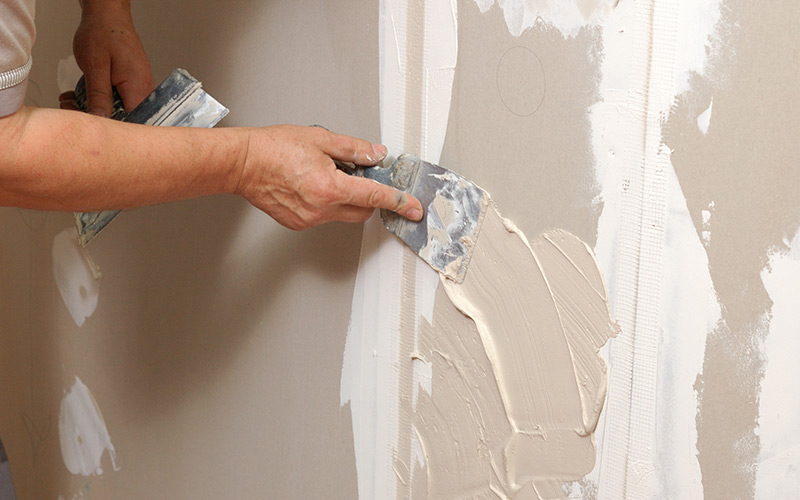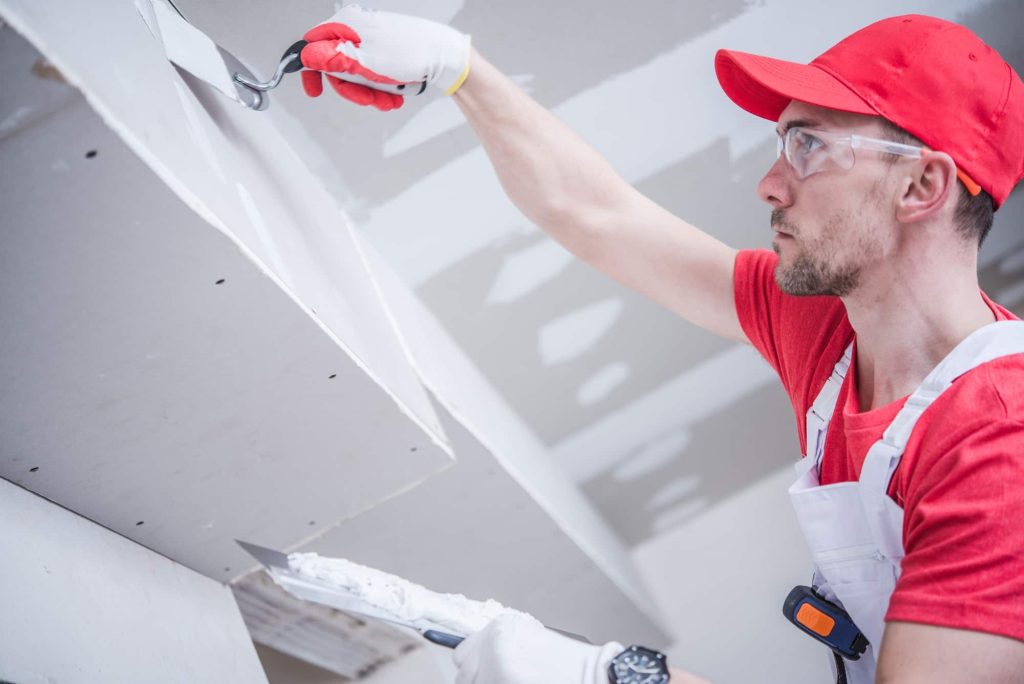Total Guide to Effective and Trusted Drywall Installation
Drywall installation is a critical element of any kind of building or improvement job, demanding a precise approach to make sure both performance and dependability. Understanding the crucial tools and strategies is critical, in addition to recognizing common risks that can bring about substandard outcomes. By methodically preparing the space and carrying out ideal practices, one can achieve a remarkable finish that stands the test of time. It is necessary to explore the nuances of each action in the process, as they jointly add to the general success of the drywall installment. What particular strategies can boost your strategy?
Necessary Tools for Drywalling
When beginning on a drywall installment task, having the right tools is essential for accomplishing a specialist finish. Vital devices consist of a drywall blade, tape action, and a T-square, which are essential for exact measurements and smooth cuts. A drywall lift is additionally very beneficial, particularly for ceiling installations, enabling simpler handling of hefty panels.
For fastening the drywall, a cordless drill and drywall screws are needed. The drill ought to be geared up with a drywall little bit to make sure performance and accuracy. In addition, a crucial device is the drywall saw, which assists in cutting about electrical outlets and various other barriers.

Moreover, safety gear such as security glasses and a dirt mask are necessary to guarantee personal safety and security throughout the installation process. Making use of the right tools not only boosts the top quality of the installation but also streamlines the operations, making the project more reliable total.
Preparing the Area

Next, examine the problem of the wall surfaces and ceilings. Fix any kind of existing damages, such as openings, splits, or peeling paint, to make certain a smooth and also surface for drywall application. Additionally, check for electric outlets, plumbing lines, and a/c ducts, marking their locations to prevent difficulties during installation.
It is also essential to determine the room precisely, identifying the dimensions of the walls and ceilings to compute the proper quantity of drywall required. Develop a detailed strategy that includes the design and orientation of the drywall panels.
Setup Techniques
Reliable setup techniques are important for accomplishing a professional surface in drywall tasks. Correct measurement and cutting of drywall sheets are essential actions.
When hanging drywall, start from the leading and job downward, guaranteeing that the lengthy side of the board is perpendicular to the framing. Safeguard the sheets with screws instead than nails, which offer greater holding power and reduce the risk of popping. Area screws every 12 inches along the edges and every 16 inches in the additional hints area of the board.
For edges, make use of corner beads to attain sharp, clean edges. When setting up on ceilings, use a drywall lift or have a partner help in holding the sheets in position (drywall contractor). Keep a void of about 1/4 inch above the flooring and ceiling to fit expansion and contraction
Finishing Touches

When the tape is in area, it's time to apply the first layer of joint substance, also recognized as mud. Make use of a 10 to 12-inch taping blade to spread the substance evenly over the taped seams, feathering the sides like this to mix with the surrounding drywall.
Enable the substance to dry completely, normally 1 day. After drying, sand the surface area lightly with fine-grit sandpaper to remove any imperfections. drywall installation. Repeat the mudding and sanding process, generally 2 to 3 layers, making certain each layer is smooth and flush with the drywall surface area
Common Errors to Avoid
Several Do it yourself enthusiasts encounter challenges throughout drywall installation that can jeopardize the final outcomes. One typical error is stopping working to appropriately reduce and gauge drywall sheets.
Another regular error is inappropriate fastening. Making use of as well few screws or nails can bring about loose drywall, while overdriving bolts can trigger the paper to tear, compromising the framework. It's vital to keep constant spacing, commonly every 16 inches, and to make sure that fasteners are flush with the surface area.
In addition, click this not resolving moisture issues before installation can lead to mold and mildew development and structural damage. Always evaluate the atmosphere and usage moisture-resistant drywall in high-humidity areas.
Conclusion
Efficient and reputable drywall installment requires meticulous attention to information throughout the process. Avoiding usual errors better adds to an expert outcome, highlighting the importance of accuracy and technique in effective drywall tasks.
It is necessary to explore the nuances of each step in the process, as they collectively contribute to the general success of the drywall installation.When getting started on a drywall installation task, having the right tools is important for attaining a professional finish.For fastening the drywall, a cordless drill and drywall screws are essential.Correctly preparing the space is important for a successful drywall installment.Effective installation techniques are important for accomplishing a specialist finish in drywall projects.